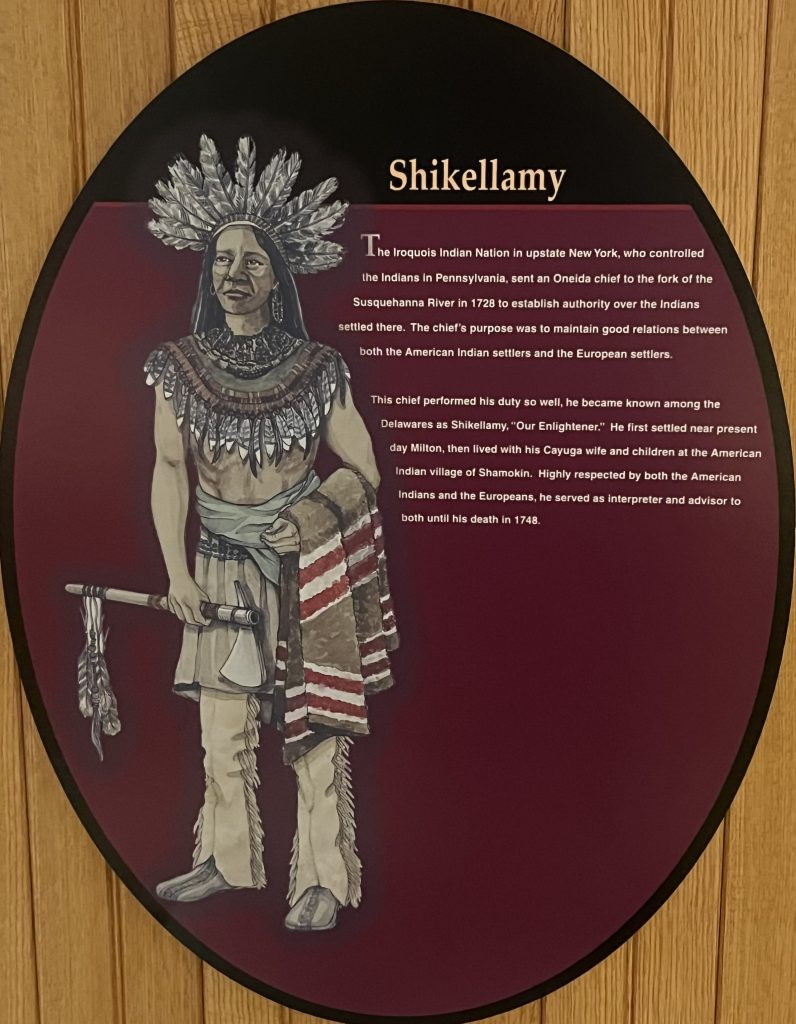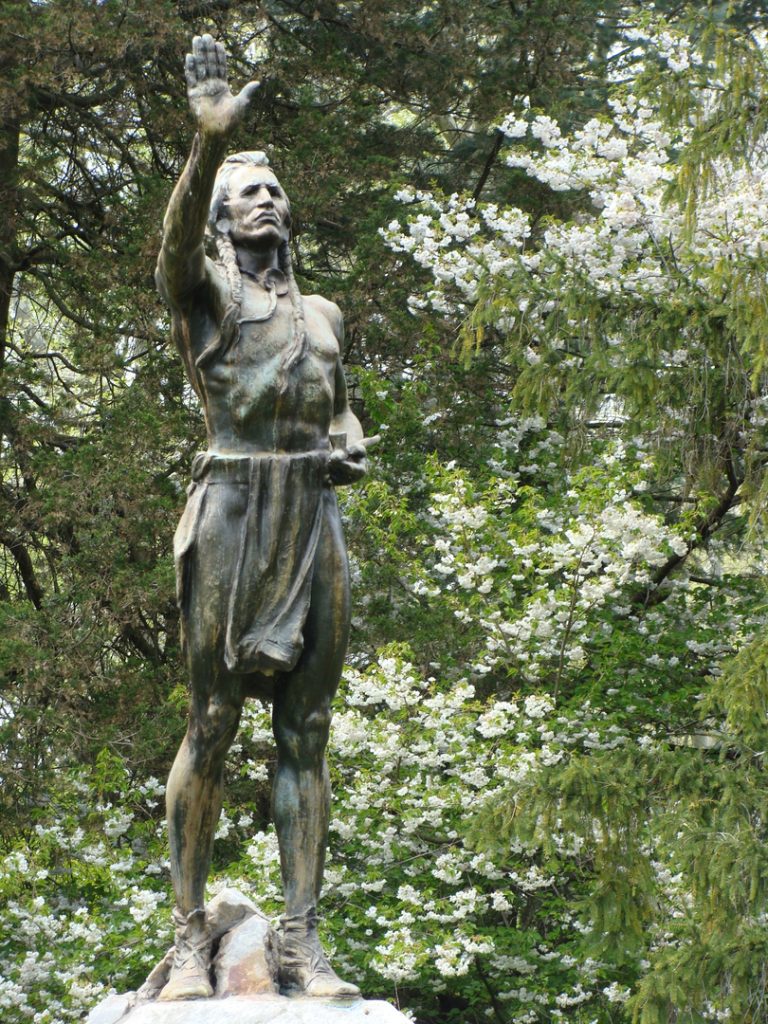Colonial America proved to be a turbulent landscape for both indigenous groups and European settlers trying to survive and cohabitate. In “A Person Of Consequence”, James Merrell writes the frontier was “rife with mistrust and misunderstanding”. Shikellamy acting as a vice-regent amid a period of fraying tensions like this is no easy feat, even for a man with such influence and power.

One of the most difficult and defining issues faced by Shikellamy was the rum traders’ persistence in trying to corrupt the indigenous people in a larger scheme to take over their land. In his book Shikellamy: the Indian Vice King at Shamokin, Carter asserts, “Shikellamy may well be regarded as America’s greatest Indian prohibitionist”. In 1731, as issues with the alcohol trade grew, a frustrated Shikellamy threatened the peace between the league and the British if the officials of Pennsylvania did not get a handle on trade. The trading of rum was pushing the Delaware and Shawnee toward Ohio and thus under the influence of the French. Cindy Inkrote explains, “He was very much anti-alcohol. He knew that that was just going to be trouble. He didn’t want to see the native culture harmed by that, but eventually it was.”
Despite his adamant attitude towards trade policy and alcohol, Shikellamy formed many friendships with European settlers. In particular, he grew a strong bond with Conrad Weiser. After being sent by his father to live with the Iroquois in 1712, Weiser was knowledgeable about their customs and their language. Shikellamy’s first appearance in Pennsylvania legal documents took place in 1732 when he was sent to Philadelphia as a mediator alongside Conrad; historians say this was the beginning of lifelong loyalty and friendship for the two. In the treaty of 1732 ,Conrad Weiser and Shikellamy were designated as the intermediaries for the Six Nations and the Government and that they would be employed to work on all treaties and conferences. During this meeting, in exchange for the Iroquois getting the Shawnee to return from Ohio the province agreed to restrict trading of rum to Native Americans. Despite the apparent victories for the pair, neither of these claims ever came to fruition.

In the 1740s, Christian Moravians began settling in Shamokin with the mission of converting Native Americans. There were two separate attempts to establish a mission at Shamokin, first by Christian and Rachel Post in 1743 and then later by Martin and Anna Mach in 1744. Both attempts faced difficulties and were on their way to being deemed failures. The situation was resolved through an agreement between Shikellamy and the Moravians. The agreement entailed that the Moravians would create a blacksmith’s shop to help the needs of the Six Nations. Other regulations in the agreement allowed the Moravians to plant and farm, but they could only grow the Three Sisters which includes corn, squash, and beans and Sid Jamieson explains “Those are the main sustenances of the Confederacy”.
Shikellamy became good friends with Moravian Missionary David Zeisberger, who was present when Shikellamy passed away. Before his death in 1748, Shikellamy became Moravian and had been baptized. Sid Jamieson explains how the Moravians were not exceedingly intrusive in the community: “They understood that this was basically Iroquois territory in a certain sense because they did not want to try to change the culture, try to make them into Moravians, if you will.”
Sources & Recommended Readings:
- “Shikellamy, ‘A Person of Consequence.’” In Northeastern Indian Lives, 1632–1816, edited
by Robert S. Grumet, 227–57. Amherst: University of Massachusetts Press, 1996. - Faull, K. M. (2024). Cultures at the Susquehanna Confluence : the diaries of the Moravian mission to the Iroquois Confederacy, 1745-1755. The Pennsylvania State University Press.
- Johansen, B. E., & Mann, B. A. (2000). Encyclopedia of the Haudenosaunee (Iroquois Confederacy). Greenwood Press.
- Carter, J. H. (1995). Shikellamy : the Indian vice king at Shamokin. Northumberland County Historical Society.
- Donehoo, G. P. (1916). Shikellamy. The Red Man, 8(5). https://link.gale.com/apps/doc/OEDLQA870398051/INDP?u=bucknell_it&sid=bookmark-INDP&xid=582835ae
- Donehoo, G. P. (1914). Shikellamy; a Prominent Indian Chieftain of Pennsylvania. The Red Man, 7(4). https://link.gale.com/apps/doc/HJFAGT468687455/INDP?u=bucknell_it&sid=bookmark-INDP&xid=b59ae859
- (n.d.). Shikellamy. Sunbury: A History. https://www.departments.bucknell.edu/environmental_center/sunbury/website/Shikellamy.shtml
- *See post with interview links
Comments